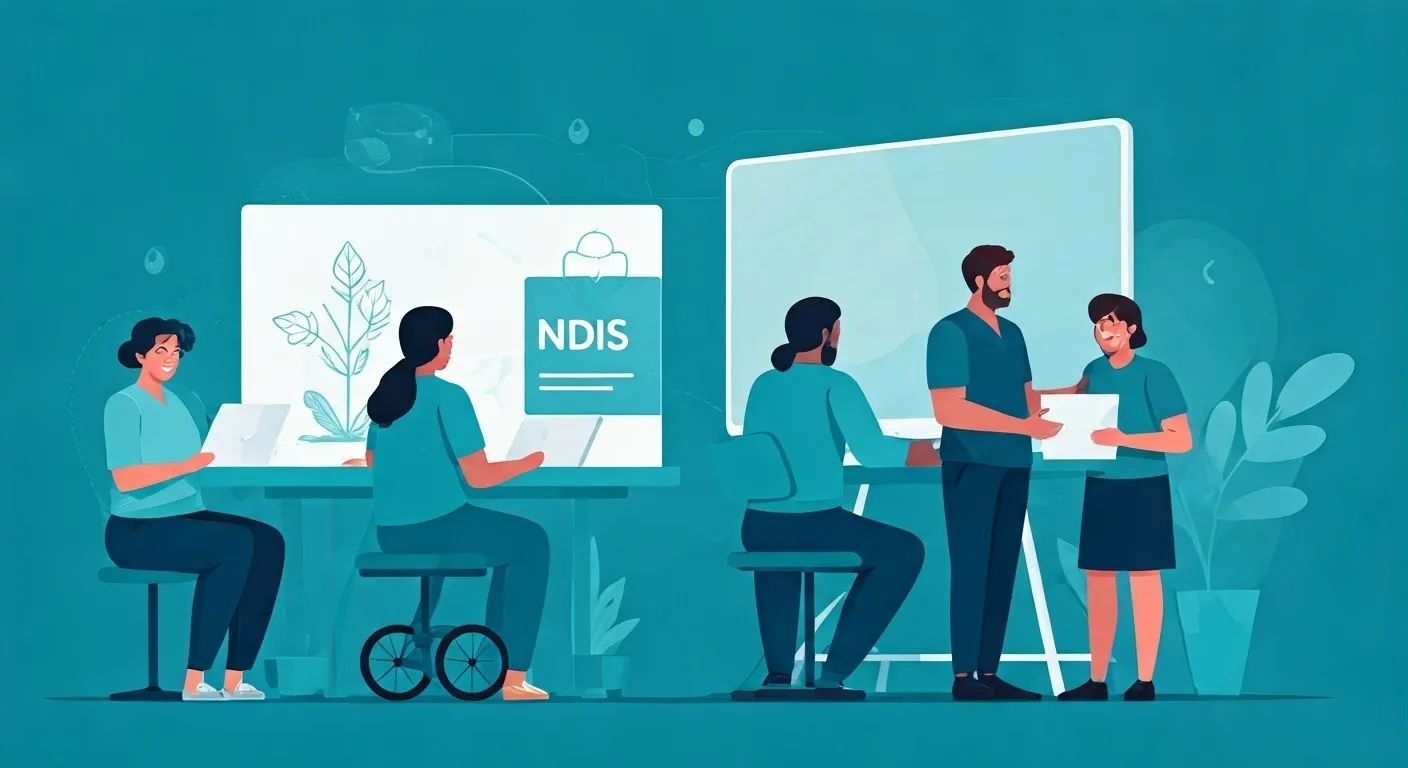Discover what it takes to become an NDIS provider and the costs involved in the registration process.

The NDIS, a nationwide initiative, strives to empower individuals with a significant disability by connecting them with essential services and support systems. NDIS providers are central to this ecosystem, delivering a spectrum of services and adhering to stringent quality and safety standards. The NDIS Commission, specifically the Quality and Safeguards Commission, oversees the registration of NDIS providers in Australia, playing a crucial role in upholding the integrity of the NDIS framework.
For organizations aiming to become registered NDIS providers, the first step involves applying to the NDIS Commission as a registered provider. While the initial application is free, it is essential to note that there are costs involved in preparing the necessary documentation and undergoing the compulsory NDIS audit, which evaluates the provider's adherence to the NDIS Practice Standards.
The journey to NDIS provider registration entails a series of key steps:
Recognizing the financial implications associated with becoming an NDIS provider is crucial for informed decision-making and long-term sustainability. By proactively considering aspects such as registration fees, audit expenses, insurance premiums, and ongoing operational costs, NDIS providers can establish robust financial plans, allocate resources effectively, and ultimately, navigate the path toward financial stability.
Furthermore, grasping the difference between upfront costs, such as initial registration fees and equipment procurement, and recurring costs, such as staff salaries, software subscriptions, and rent, is vital. A comprehensive understanding of these financial commitments is essential for NDIS providers to deliver high-quality support services while concurrently maintaining a financially stable and successful operation.

Starting an NDIS business entails a range of initial costs that must be factored into your budget from the outset. These costs include the necessary step of registering your business structure with the Australian Securities and Investments Commission (ASIC), obtaining relevant insurance policies, fulfilling staff screening requirements, and developing NDIS-compliant policies and procedures.
Understanding these initial financial commitments is crucial for aspiring NDIS providers, enabling them to establish a solid financial foundation for their business. By carefully planning and budgeting for these initial costs, NDIS providers can pave the way for a sustainable and successful operation.
Navigating the NDIS registration process involves specific fees that you need to be aware of:
Remember, even though the NDIS registration application itself is free, it is vital to consider other associated costs, such as seeking advice and support from legal or accounting professionals. Additionally, the development of NDIS-compliant policies and procedures is essential, ensuring adherence to quality and safeguarding requirements.
Audits are a fundamental aspect of NDIS registration, with the cost varying based on the type of audit required: certification or verification. The deciding factor is the level of risk associated with the type of support services you intend to offer. Engaging an approved quality auditor is a must to conduct these audits, ensuring you meet the NDIS Practice Standards. Below is a breakdown of the two audit types:
| Audit Type | Description | Cost Range |
|---|---|---|
| Verification Audit | Required for providers delivering lower-risk and less complex services, involving a desktop audit. | $900 - $2,500 |
| Certification Audit | Mandatory for providers delivering higher-risk and more complex services, requiring a comprehensive audit process. | $3,000 - $10,000+ |
Once operational, NDIS providers need to account for ongoing expenses crucial to maintaining compliance with NDIS quality standards and delivering high-quality support services. These recurring costs encompass staff wages and training, rent for office space or facilities, insurance renewals, software subscriptions, and marketing and advertising.
Delivering exceptional support services hinges on having a team of skilled and qualified staff, including support coordinators. As an NDIS provider, you must invest in ongoing staff training to ensure they stay updated on industry best practices and NDIS requirements. These include mandatory training programs related to the NDIS Code of Conduct, quality and safeguarding standards, and specific support needs of your target clientele.
Moreover, complying with legal obligations regarding staff wages, superannuation contributions, and workers' compensation insurance is non-negotiable. Additional expenses might include providing staff uniforms, personal protective equipment, and travel allowances. Remember, investing in your workforce through competitive wages and comprehensive training, possibly with the help of a recruitment agency, benefits your business in the long term.
Effectively managing these recurring costs is crucial for the long-term financial health of your business. Consider implementing cost-saving strategies, such as bulk purchasing for supplies, negotiating favorable rates with service providers, and exploring government subsidies and grants.
Workers' Compensation Insurance: Covers medical expenses and lost wages for employees injured in the line of work, which can contribute to overall insurance costs.
Workers' Compensation Insurance: Covers medical expenses and lost wages for employees injured in the line of work, which can contribute to overall insurance costs.
Adequate insurance is critical for safeguarding your NDIS business from potential risks and liabilities. The types of insurance you need may vary, but some common ones include:
Remember, specific requirements may apply based on your service offerings, such as transporting participants, where comprehensive motor vehicle insurance is essential.
Assistive Technology: Invest in tools and equipment based on your clients' needs, such as communication devices, mobility aids, sensory equipment, and personal care tools.
Staying vigilant about these less obvious expenses and proactively incorporating them into your budget helps prevent financial strain and ensures smooth operations. It is crucial to remember that overlooking seemingly small expenses can accumulate over time, potentially impacting the overall financial well-being of your NDIS business.
In today's digital landscape, investing in technology and software is essential for NDIS providers to operate efficiently and deliver quality service. Consider these common technological investments:
Effective marketing strategies are essential for building brand awareness, attracting clients, and ultimately, the success of your NDIS business. Consider these marketing avenues and associated expenses:
Remember, consistency is key in marketing. Regularly review and adapt your strategies to align with your target audience and business goals.
The Australian Government offers a wide range of services, resources, and support programs designed to assist NDIS providers in establishing and growing their businesses. Familiarize yourself with these valuable resources that can contribute to significant cost savings:
The Australian Government offers a range of resources and support programs designed to assist NDIS providers in establishing and growing their businesses. Familiarize yourself with these valuable resources that can contribute to significant cost savings:
Building strategic partnerships and engaging in networking activities within the NDIS sector offers several cost-saving benefits:
Actively participate in industry events, join relevant associations, and leverage online platforms to connect with potential partners and expand your professional network.
In conclusion, becoming an NDIS provider involves both initial and recurring costs that require careful consideration. Understanding the financial implications and hidden expenses is crucial for long-term sustainability. By leveraging cost-saving strategies like utilizing government resources and forming strategic partnerships, providers can optimize their expenditure. It's essential to prioritize staff training, insurance requirements, and compliance with audit expenses to ensure quality services. By being mindful of both visible and hidden costs, NDIS providers can establish a successful and impactful presence in the disability support sector.